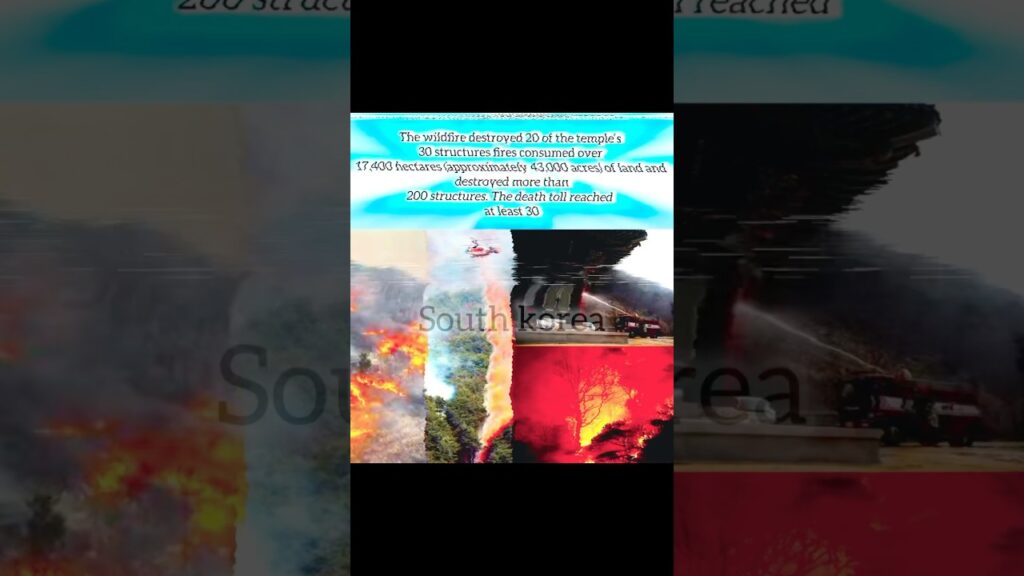
The wildfires began on March 22, 2025, and rapidly spread across multiple southeastern regions, including Andong, Uiseong, Sancheong, and Ulsan. Fanned by strong winds and dry conditions, the fires consumed over 17,400 hectares (approximately 43,000 acres) of land and destroyed more than 200 structures. The death toll reached at least 30, with many victims being elderly individuals. Among the deceased were a helicopter pilot and four firefighters who perished during firefighting operations.    
Destruction of Gounsa Temple:
One of the most significant cultural losses was the destruction of Gounsa Temple in Uiseong County. Established in 681 during the Silla Dynasty, Gounsa was renowned for its historical and architectural significance. The wildfire destroyed 20 of the temple’s 30 structures, including two state-designated treasures: the Gaunru Pavilion and Yeonsujeon Hall. Fortunately, some national treasures, such as an 8th-century stone Buddha statue, were evacuated before the fire reached the main wooden buildings.   
Response and Aftermath:
The South Korean government mobilized nearly 9,000 firefighters, over 130 helicopters, and numerous vehicles to combat the blazes. Despite these efforts, strong winds and dry conditions hampered containment operations. Tens of thousands of residents were evacuated from affected areas, and emergency shelters were established in schools and gyms. The Korea Heritage Service issued a ‘serious’ national heritage disaster alert and relocated 15 historic items, including 10 national treasures, from threatened sites.    
Authorities suspect that human activities, such as the use of fire to clear overgrown grass near family tombs, may have ignited some of the fires. This disaster has prompted discussions on the need for enhanced wildfire preparedness and response strategies, especially in the context of climate change increasing the frequency and severity of such events.  
The March 2025 wildfires serve as a somber reminder of the devastating impact natural disasters can have on human lives, communities, and cultural heritage.
source



